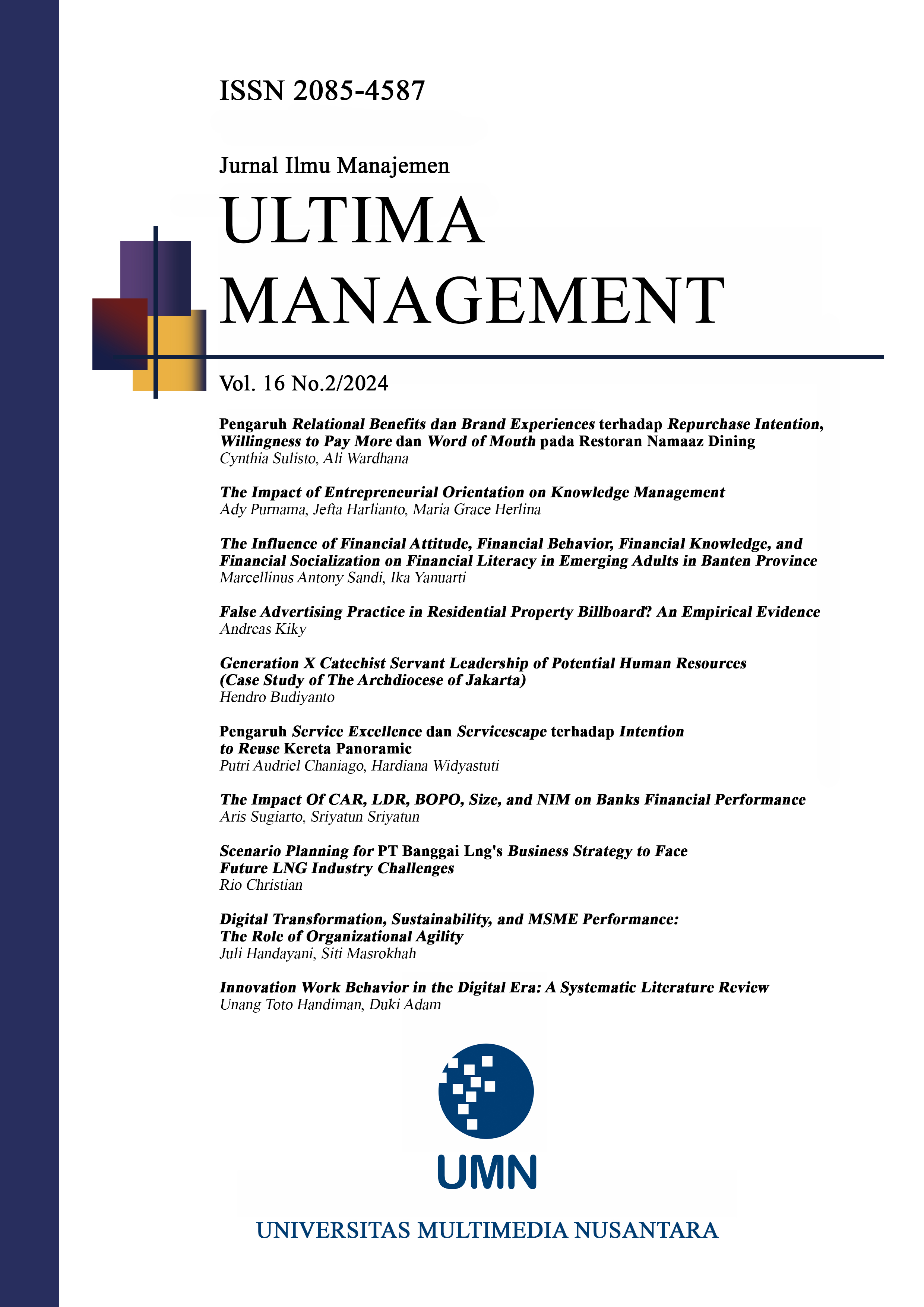PENGARUH BRAND FAMILIARITY DAN PERCEIVED NOSTALGIA TERHADAP POST PURCHASE INTENTION DENGAN PERCEIVED VALUE SEBAGAI MODERATOR
DOI:
https://doi.org/10.31937/manajemen.v16i2.3908Abstract
Abstract- This research analyzes the influence of brand familiarity and perceived nostalgia on post-purchase intention, with perceived value as a moderating variable. Conducted on 146 respondents in Indonesia, it employs quantitative methods using the Partial Least Square-Structural Equation Modeling (PLS-SEM) approach. The findings indicate that brand familiarity and perceived nostalgia significantly impact post-purchase intention, as consumers tend to make repeat purchases when they feel familiar with a brand or experience nostalgia. However, perceived value does not always strengthen this relationship. Among the five tested hypotheses, three were approved, while two were rejected. The study emphasizes the importance of marketing strategies that leverage nostalgia and brand familiarity to enhance loyalty. However, the moderating role of perceived value requires further examination in different contexts. This research contributes to consumer loyalty theory, particularly in markets influenced by emotional factors. A key contribution of this study is the integration of perceived nostalgia as a central factor in shaping post-purchase intention, an area not widely explored in previous literature. Additionally, it investigates the moderating role of perceived value in the relationship between brand familiarity and nostalgia on post-purchase intention, offering insights into the emotional dynamics of consumer loyalty. The novelty of this research lies in combining nostalgia and brand familiarity while examining perceived value's moderating role in the Indonesian market, a relatively unexplored area. It also presents a PLS-SEM-based methodological approach to studying emotional factors in consumer behaviour.
Keywords: Post-Purchase Intention; Perceived Nostalgia; Brand Familiarity; Perceived Value; Consumer Loyalty.
Downloads
Downloads
Published
How to Cite
Issue
Section
License
Authors retain copyright and grant the journal right of first publication with the work simultaneously licensed under a Creative Commons Attribution-ShareAlike International License (CC-BY-SA 4.0) that allows others to share the work with an acknowledgement of the work's authorship and initial publication in this journal.
Authors are able to enter into separate, additional contractual arrangements for the non-exclusive distribution of the journal's published version of the work (e.g., post it to an institutional repository or publish it in a book), with an acknowledgement of its initial publication in this journal.















